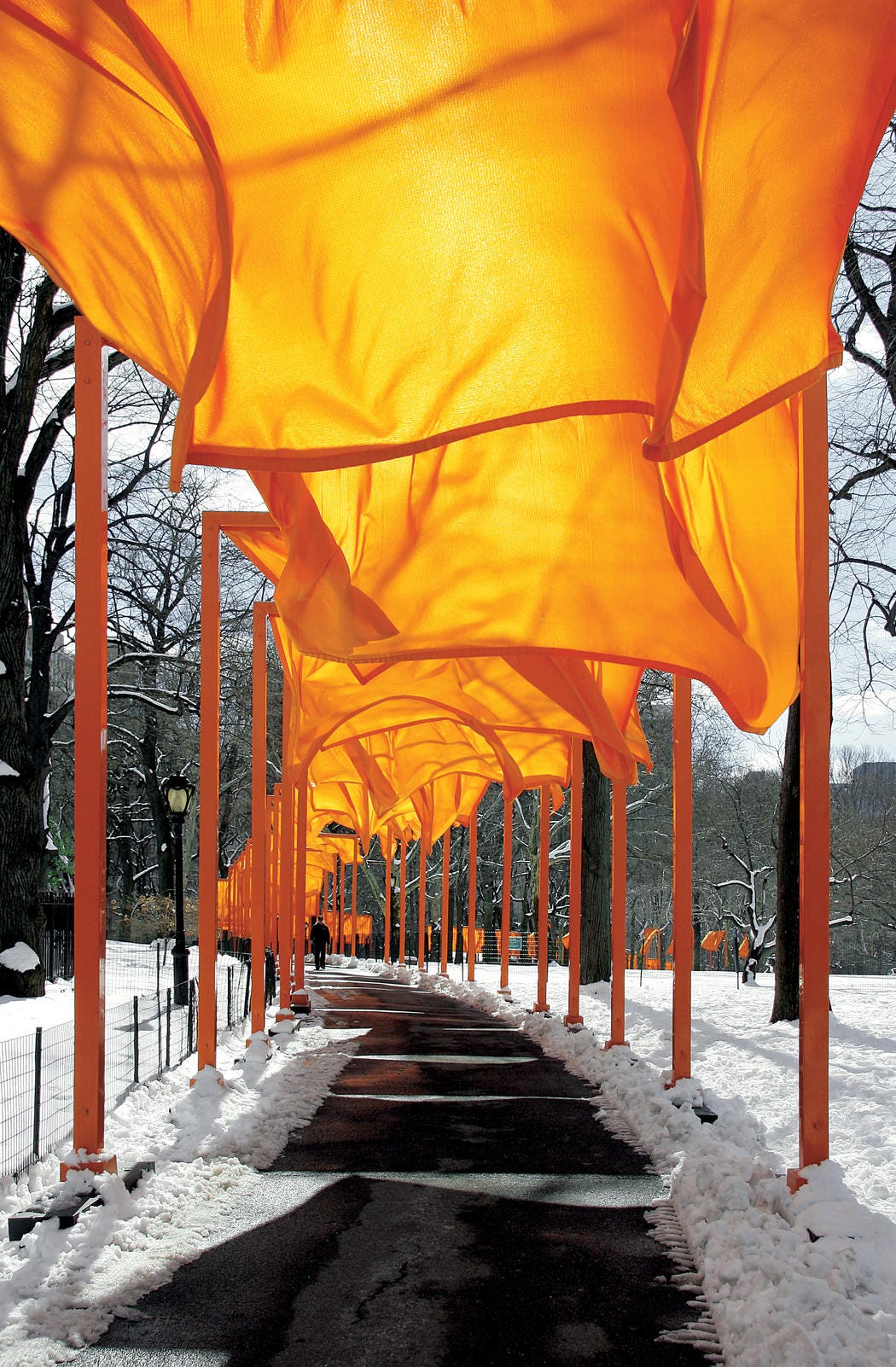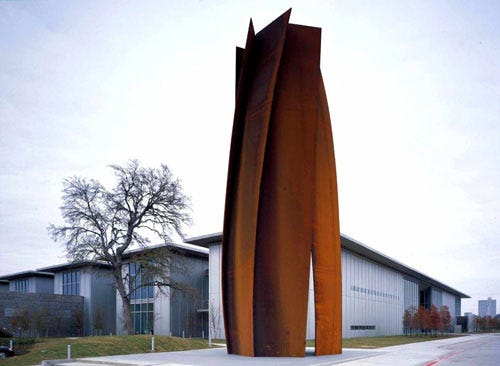Land Art: Overview
This week we are looking at land art in light of the death last week of artist Christo Vladimirov Javachef, who was known by his first name Christo. Christo and his late wife Jeanne-Claude Denat de Guilleon, otherwise known as Christo and Jeanne-Claude, created large installations in parks, on water and in cities throughout the twentieth and twenty-first centuries. One of their best known projects is The Gates. The twenty year project comprised 7,503 gates clad in orange fabric dangled above New York’s Central Park sidewalks.

The Gates (1975-2005). (Image © 2005 Christo and Jeanne-Claude)
They were among the many artists who made up the broad, interdisciplinary environmental art movement, which includes the sculptural land art, environmental sculpture, and ecological art. This week we will look a bit closer at land art, and try to differentiate it from these adjacent categories.

Turtle (2012). Ellearose Savage. Image: Rebecca Fisher
The above example is on display at the Musée d'ethnographie de Genève - it is a sculpture of an endangered turtle made up of the ghost nets that often tangle and kill the species. These ghost net sculptures are definitely sculputre, and they are ecologically or environmentally minded - but we would have trouble categorizing them as land art or even environmental sculpture, even though the latter seems intuitive. As it doesn’t incorporate the land or the environment into the work itself directly, this would be a better example of ecological art.

Richard Serra, Vortex (2002). Modern Art Museum of Fort Worth.
Another contrast to land art would be the massive steel works of Richard Serra. These sculptures are often site-specific, made of natural materials, and react to the environment. The steel Vortex, for instance, is slowly rusting. The steel changes colors, and flakes off. It fits more comfortably under the label of environmental sculpture, where a sculpture is created specifically for an environment or when sculpture itself becomes the environment. Serra's work is often an example of both.
So what then, is land art? To be understood, land art must be placed in a bit of context. It emerged in the late 1960s and was a push back against both capitalism and environmental degradation. Land art could not be owned, not really - it was in situ and integrated with the space it was in - and it was too large to be purchased and transported. Some works were a commentary on humankind's relationship with the environment; others simply used rocks, sand and other natural elements as found materials. They were, as many artists practiced, critiques of art institutions and collecting. These works, many trucked away in inaccessible or little known areas, presented a new way of engaging with the artworks - no longer constrained to galleries, only the photos or sketches of the artwork could be sold, and access to the experience of the art was profoundly democratic.
Key Work: Spiral Jetty by Robert Smithson (1938-1973)

Photographed from atop Rozel Point, in mid-April 2005 (Public domain)
One of the key works of land art is Robert Smithson’s Spiral Jetty, constructed in Great Salt Lake in Utah in 1970. The piece is 1,500 feet long (you can see it clearly in satellite photos) and consists of material taken from the lake itself. The piece is constantly changing, by the day, the season and the year. In 1999, the piece was completely submerged in water, the lake levels have been declining in recent years, and today - 50 years after its construction - it is still visible, still visitable, and slowly eroding and changing as the artist intended.
As documented in the short film above, Smithson's work (and others) is a reminded that land art is not necessarily ecologically friendly - the transformation of the lake for 'Spiral Jetty' was destructive of the environment, and has altered the landscape permanently.
Tasting Notes:
Large scale, site-specific sculptureUse of the natural environment as canvas and materialOften, but not always, ecologically minded
For the next few days, we’ll be looking closer at some specific pieces of land art. Have a great week, and if you’re enjoying this newsletter, please share it with someone else who might enjoy it as well.


